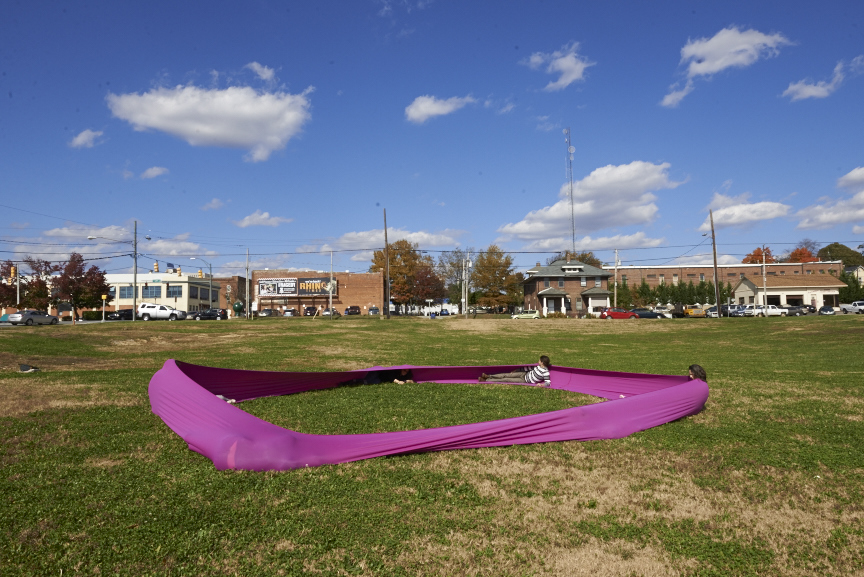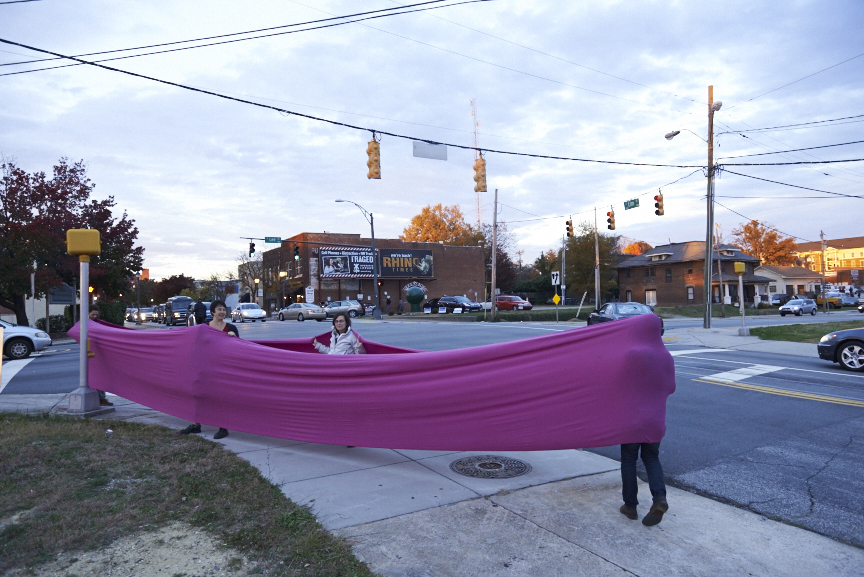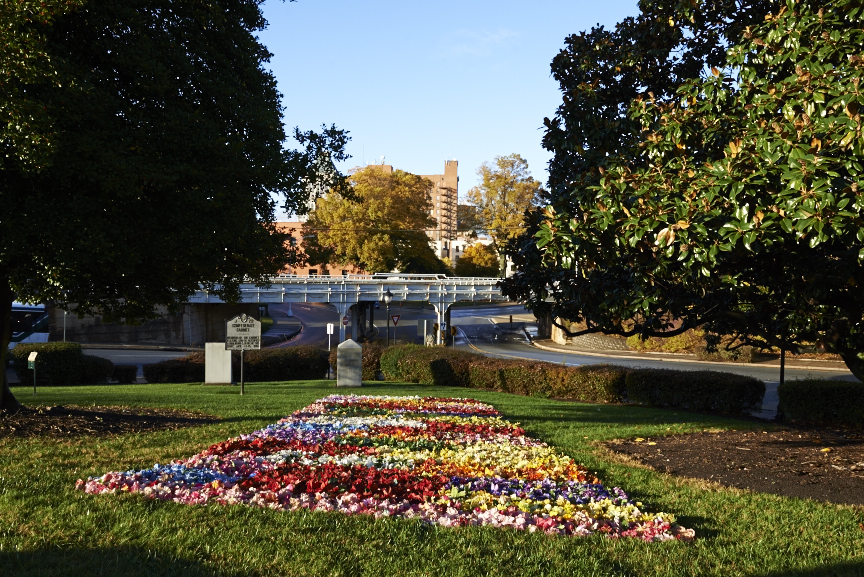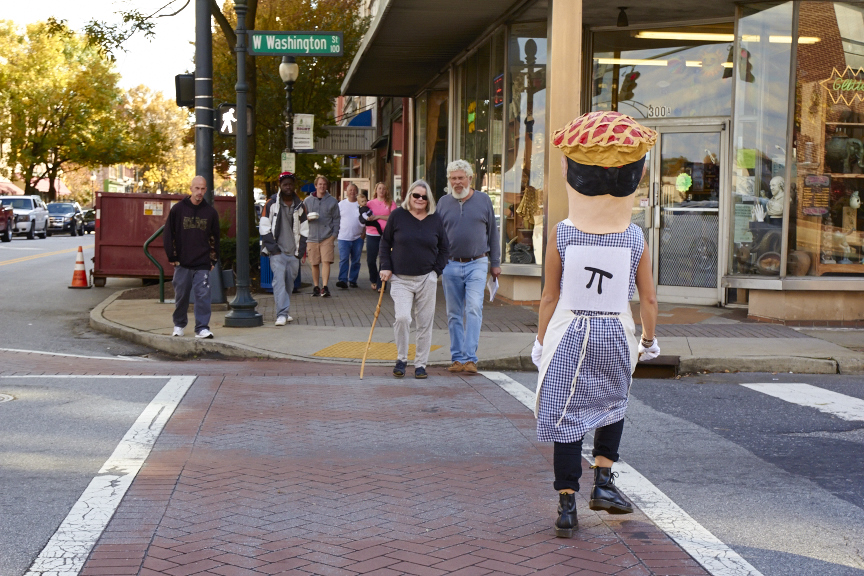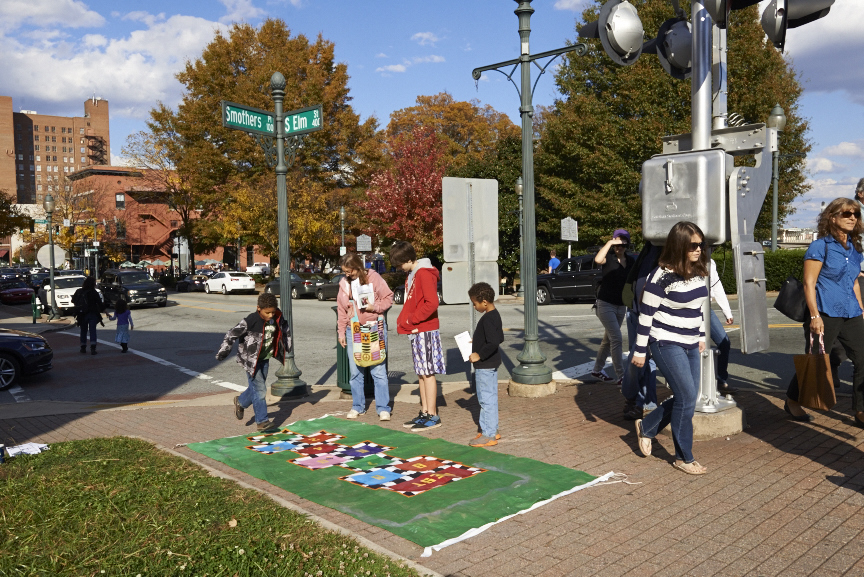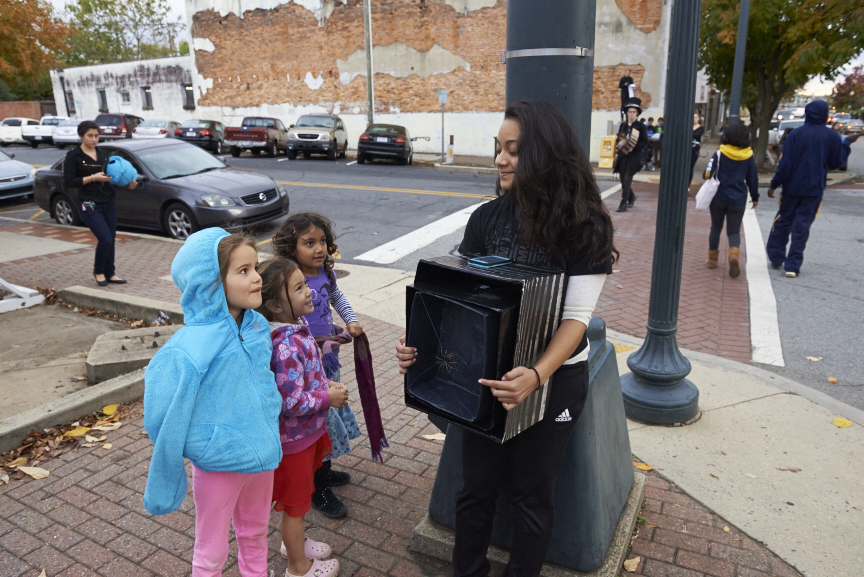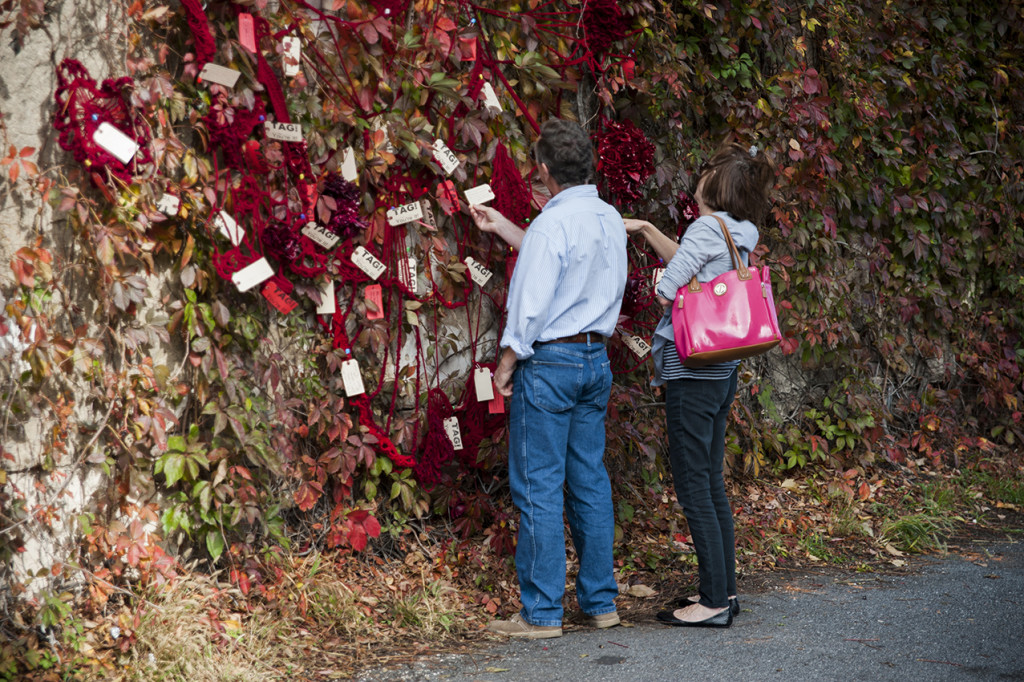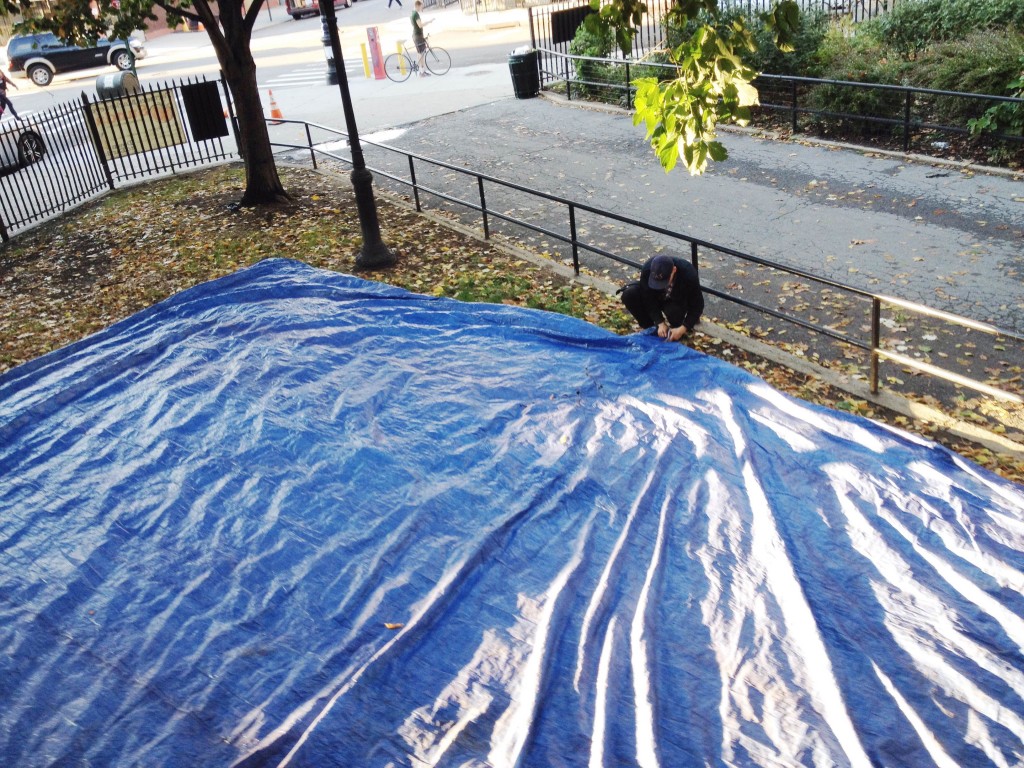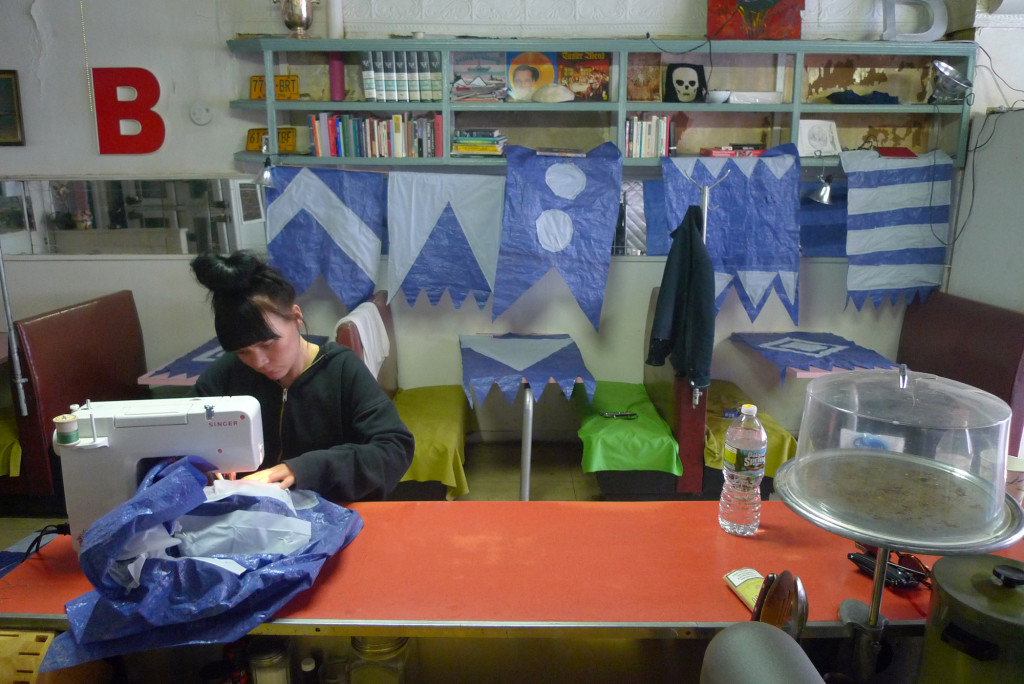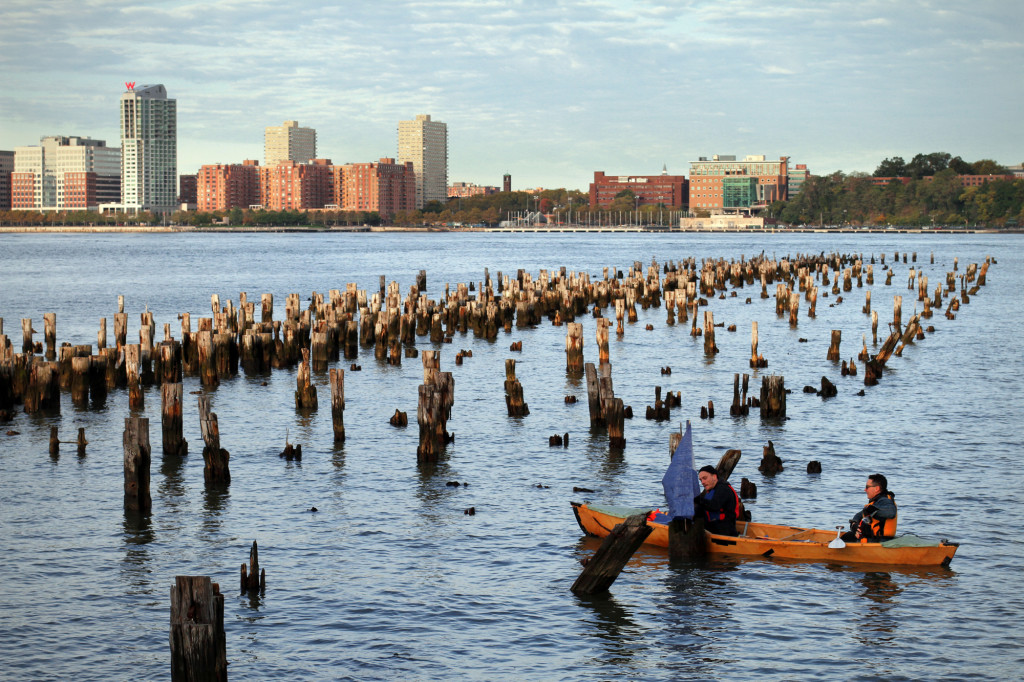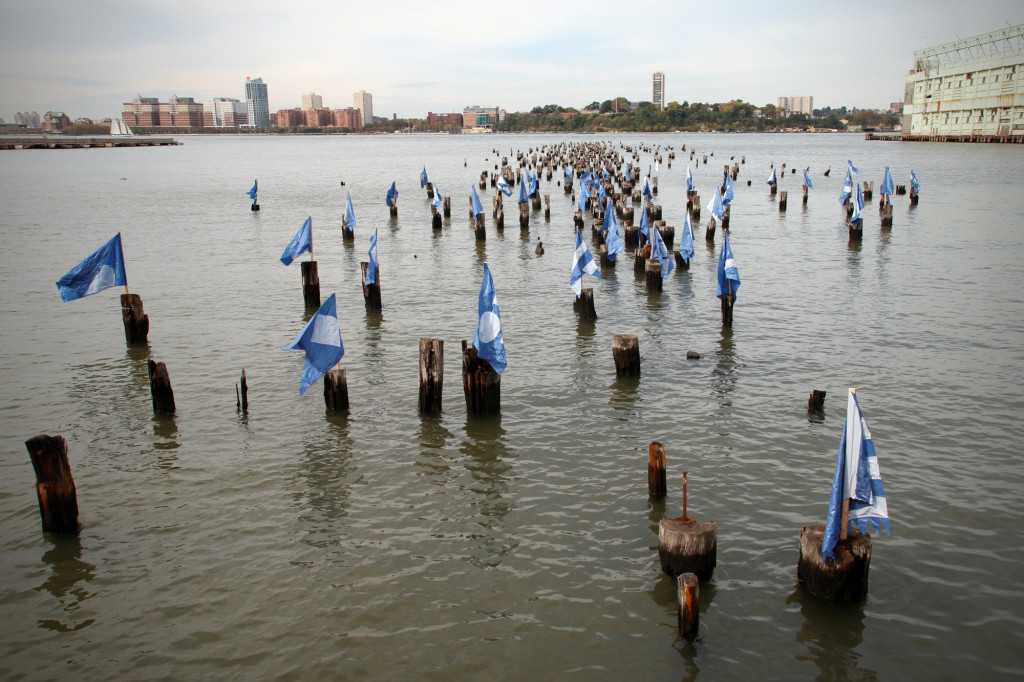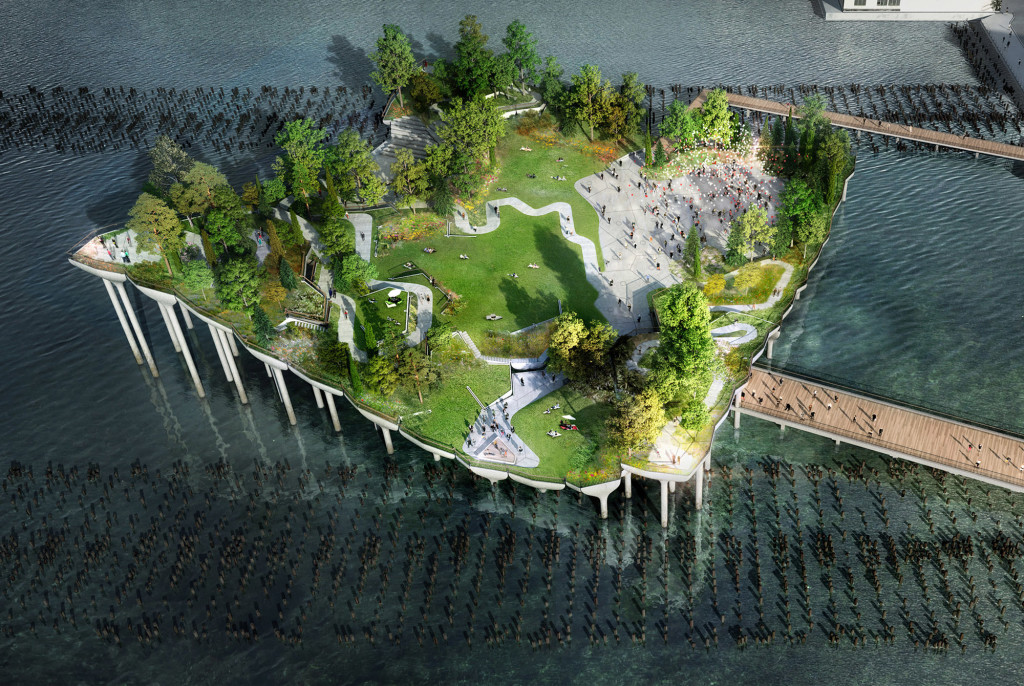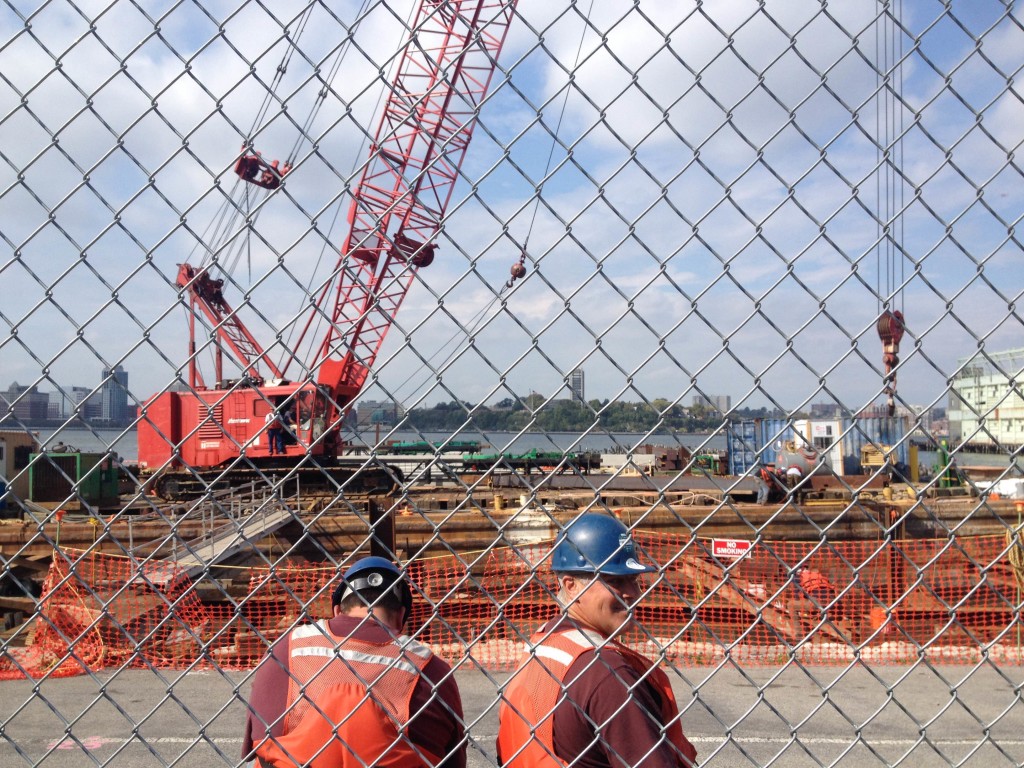When I go to downtown Greensboro, NC, past the intersection of the newly renamed Gate City Boulevard and Elm Street, I find myself seeing two realities. One is the construction site that is there right now, in November 2015: steel beams framing the outline of Union Square Campus, a nursing education building in the works.
The other is a series of images and soundbites that flash through my mind, almost like a slideshow from a bygone era. Click: I see a large magenta band of stretchy fabric on an emerald green field of grass. Click: There are children wrapping themselves up in the fabric. Click: There is Xandra Eden, co-curator of the Art in Odd Places / Greensboro festival, entwined in the fabric. Click: It’s evening now, the sun is setting and the fabric, animated by a small group of people, undulates down Elm Street (Greensboro’s main downtown avenue) the pink in the sky nearly matching the brightly colored cloth. Infectious laughter. I think I hear it still.
Kaloyan Ivanov / Void Simulacrum / by Dhanraj Emanuel
The magenta fabric was a work of art called “Void Simulacrum” that was made by Brooklyn-based artist Kaloyan Ivanov. It was presented as part of AiOP / Greensboro in Fall 2013. Ivanov describes the work as a performance that “starts with only two people, and over the course of three to six hours, the sculpture incorporates willing spectators and passers-by who become full participants and owners of the piece. As each person makes aesthetic decisions they become responsible for the artwork as the fabric shifts and breaks. The stage, which usually alienates and assigns a static role to the audience is eliminated in favor of a collective choice and emergent behavior.” The piece has been shown in Boston, New York City, Toronto, Sofia, Greensboro, Washington D.C. and Iowa City.
Kaloyan Ivanov / Void Simulacrum / by Dhanraj Emanuel
Ivanov’s work was just one of ephemeral works of art that transformed our city the weekend Art in Odd Places came to town. And although several years have passed, the memories of this time remain as visual overlays in my mind as I walk through downtown.
Some of the works were gravely serious. There — just beyond the bust of Martin Luther King Jr. with the plaque that tells us that Dr. King canceled a visit planned for Greensboro on April 4, 1968 to remain in Memphis, where he was assassinated on that day – was Terry Hardy’s “10,000 Flowers for Willie Grimes,” a field of flowers honoring the college student whose death brought international attention to the racial instability of Greensboro in 1969.
Terry Hardy / 10,000 Flowers for Willie Grimes / by Dhanraj Emanuel
Others, such as Virginia-based artist Megan Marlatt’s “Big Head Brigade” and Jennifer L. Schultz’s “Hopscotch Shuffle” were delightfully playful.
Megan Marlatt / Big Head Brigade / by Sheryl Oring
Jennifer L. Schultz / Hopscotch Shuffle / by Dhanraj Emanuel
Several university classes participated in the Greensboro festival. Mark Dixon’s students at Guilford College made fanciful portable sculptures that also functioned as sound-making devices. While Thomas Asmuth and students at the University of West Florida made a sound installation that occupied a large magnolia tree.
Mark Dixon and Guilford College students / Mobile Devices / by Dhanraj Emanuel
Graduate students in the MFA program at the University of North Carolina at Greensboro also made work for the festival. Among the memorable projects was Stacy Bloom Rexrode’s “TAG! You’re It” in which she invited the public to share stories about women’s reproductive health and rights.
Stacy Bloom Rexrode / TAG! You’re It / by Nicole Du Bois
This experience – together with my own background in creating work for several of the New York festivals – led me to see how Art in Odd Places can function as a laboratory for students interested in creating work in the public realm. So when the Lloyd International Honors College at the University of North Carolina at Greensboro offered me a chance to create the class of my dreams, I proposed a class that would study Art in Odd Places.
We began the class by watching Ed Woodham’s TED Talk done in conjunction with the Indianapolis festival in 2014. Then each student researched one of the artists who had presented work at an AiOP festival. This round of presentations generated observations as well as questions about the elements of an art practice that engages the public. It was a great starting point for students who were trying on an entirely different way of working.
After analyzing other artists’ work, the students began imagining what kind of public works they might like to make. At the time, we thought they would present the work in downtown Greensboro during a First Friday event in November. On the first Fridays of every month, downtown businesses and arts organizations stay open late and host a variety of arts events, while performers and artists take to the streets with their work.
Then we went to New York, to watch and participate in AiOP 2015: Recall. Very simply said, this changed their projects, if not their lives. I will save the details for the students themselves to describe. Right now, they’re hard at work on projects they are planning to show in downtown Greensboro on the First Friday in December. Stay tuned.
Art in Odd Places class in New York with Laura Mylott Manning (left) and Lee Walton (right). / by Sheryl Oring

